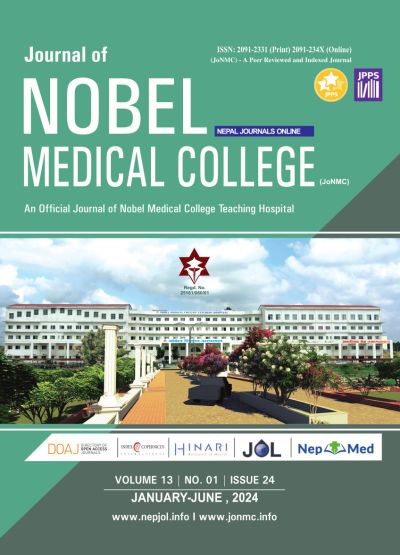Superficial Veins in the Cubital Fossa Regions among the Nepalese and Indian Medical Students of a Medical College in Nepal: A Descriptive Cross-Sectional Study
DOI:
https://doi.org/10.3126/jonmc.v13i1.68109Keywords:
Arm, Axillary Vein, Forelimb, Phlebotomy, Subcutaneous tissueAbstract
Background
The veins in the upper limb are classified as superficial or deep, with deep veins, such as the venae comitantes and axillary vein, coming after the major arteries. The subcutaneous tissue contains the superficial veins, which link to the deep veins. These veins include the basilic, cephalic, median cubital, and median antebrachial veins. These superficial veins are clinically significant for phlebotomy, transfusion, and cardiac catheterization, and it joins the median cubital vein at the elbow. It is essential to comprehend the structure and patterns of cubital superficial veins in order to design dialysis access and minimise hazards.
Materials and Methods
Studying the superficial venous organisation in the cubital fossa of 192 MBBS preclinical sciences students, ages 18 to 24, was a cross-sectional observational study carried out at the Nobel Medical College Teaching Hospital in Nepal. A tourniquet and skin marker/tailor's chalk were used in the study to examine 384 anterior aspects of the arms. Six sets of veins were distinguished from the skin's veins. Tiny veins, cubital wounds, or thick tissue layers disqualified students.
Results
A study of 192 preclinical sciences students at Nobel Medical College Teaching Hospital in Biratnagar found that type II variant was the most common venous pattern in the cubital fossa region, followed by type I in 24.75%, and the lowest being the type VI pattern in 3.35%.
Conclusion
It was discovered that the patterns of superficial veins at the cubital fossa did not significantly alter based on the gender or nationality of the individual. Overall, the most common venous pattern was type II, though type I was more frequently seen in female subjects but the difference was statistically insignificant.
Downloads
Downloads
Published
How to Cite
Issue
Section
License

This work is licensed under a Creative Commons Attribution 4.0 International License.
JoNMC applies the Creative Commons Attribution (CC BY) license to works we publish. Under this license, authors retain ownership of the copyright for their content, but they allow anyone to download, reuse, reprint, modify, distribute and/or copy the content as long as the original authors and source are cited.




